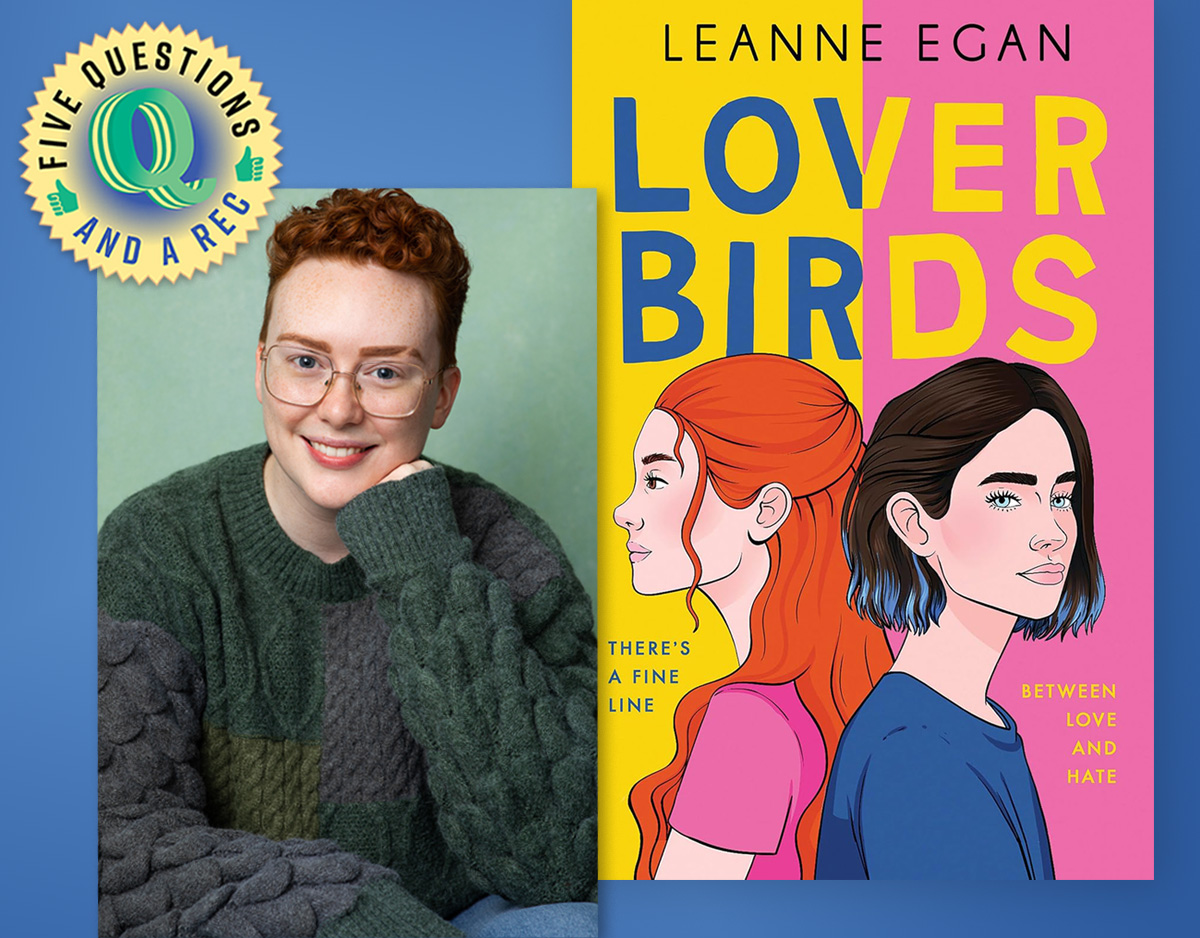Author Leon Egan on YA Debut ‘Lover Birds’ | 5 Questions and a Rec
In this Q&A series, SLJ poses five questions and a request for a book recommendation to a debut YA author. Leon Egan shares about Lover Birds in this latest installment.

In this Q&A series, SLJ poses five questions and a request for a book recommendation to a debut YA author. Leon Egan shares about Lover Birds in this latest installment.
1. Congrats on your YA debut! How would you describe your book to readers?
Lover Birds is a sapphic rom-com that’s a love letter to a few things, but especially to messy queer kids who always feel like ‘too much.’ It follows Eloise, who is just trying to get through the last two years of high school with unmedicated ADHD, and Isabel, who has just moved from London to the very working-class city of Liverpool. Isabel judges pretty much everything about Eloise’s life, but while a rivalry might spark up at first, there are definitely some new feelings there that Eloise feels unequipped to handle.
2. What drew you to YA to tell this story?
The characters in this story spend so much time learning about themselves and discovering new facets of their identities, which is such a huge part of young readers’ lives. Being a teenager is undeniably tough. There’s a minefield of big emotions and new experiences, and fiction can help enormously in working through it all, especially when it comes to neurodiversity and queerness, which are always going to be quite big parts of my writing. It makes young people a really rewarding audience to write for, but it also means the characters in YA are some of the most interesting to write, because so much of what they’re going through is huge and new and exciting.
3. What, if anything, surprised you while writing it?
I definitely surprised myself with how strongly I felt about some of the themes of the book while I was writing it. Things like the ways in which women and girls with ADHD feel like they have to work hard to fit the mold, and the way classism affects perceptions of Liverpool and other working class cities in the north of England. I knew those themes were important to me, otherwise I wouldn’t have been writing the book in the first place, but there were some moments when I would write whole paragraphs with an intensity that I wasn’t expecting, I think I probably worked through some stuff I didn’t know I needed to work through!
4. Tell us more about the characters. Which character do you most identify with and why?
This is a tricky one, because obviously there are elements of my ADHD in Eloise, but she’s so different to me as a character. It was really important to me that she had the benefit of having been totally unafraid to be herself up until the events of the book. A lot of girls with ADHD present a little differently because they’re taught very early on to stay still and quiet, and I wanted Eloise to unapologetically defy that stereotype. Isabel’s a little closer to my own personality in terms of her quiet awkwardness, but that’s where the similarities end for sure. I really think the character most like me is Mel, one of the school friends. Each of the girls is loosely based off a Bennet sister from Pride and Prejudice, and Mel is Mary: bookish, and a little obnoxious about it at times. Her main personality trait in the book is being stressed about her school work, and I definitely embodied that as a teenager.
5. What do you hope readers will take away from this book?
Lover Birds is fundamentally about this really common feeling of being ‘too much.’ If there are any readers who feel like they don’t have permission to be unapologetically themselves, I’d love this book to be a reminder to never make yourself smaller or quieter for anybody, because the ones who deserve you will love those parts of you, too.
The Rec: Finally, we love YA and recommendations—what’s your favorite YA book you've read recently?
I just finished an advance copy of Sad Girl Hours by Anna Zoe Quirke, which is both a gorgeous rom-com, and an incredibly real portrayal of seasonal depression. I absolutely loved it, it’s not a topic I see in a lot of books, and it feels very honest and relatable in the way it portrays seasonal depression. But it’s so well balanced with sweetness and lightness when it needs to be—I highly recommend it.
RELATED
The job outlook in 2030: Librarians will be in demand
The job outlook in 2030: Librarians will be in demand
ALREADY A SUBSCRIBER? LOG IN
We are currently offering this content for free. Sign up now to activate your personal profile, where you can save articles for future viewing






Add Comment :-
Be the first reader to comment.
Comment Policy:
Comment should not be empty !!!